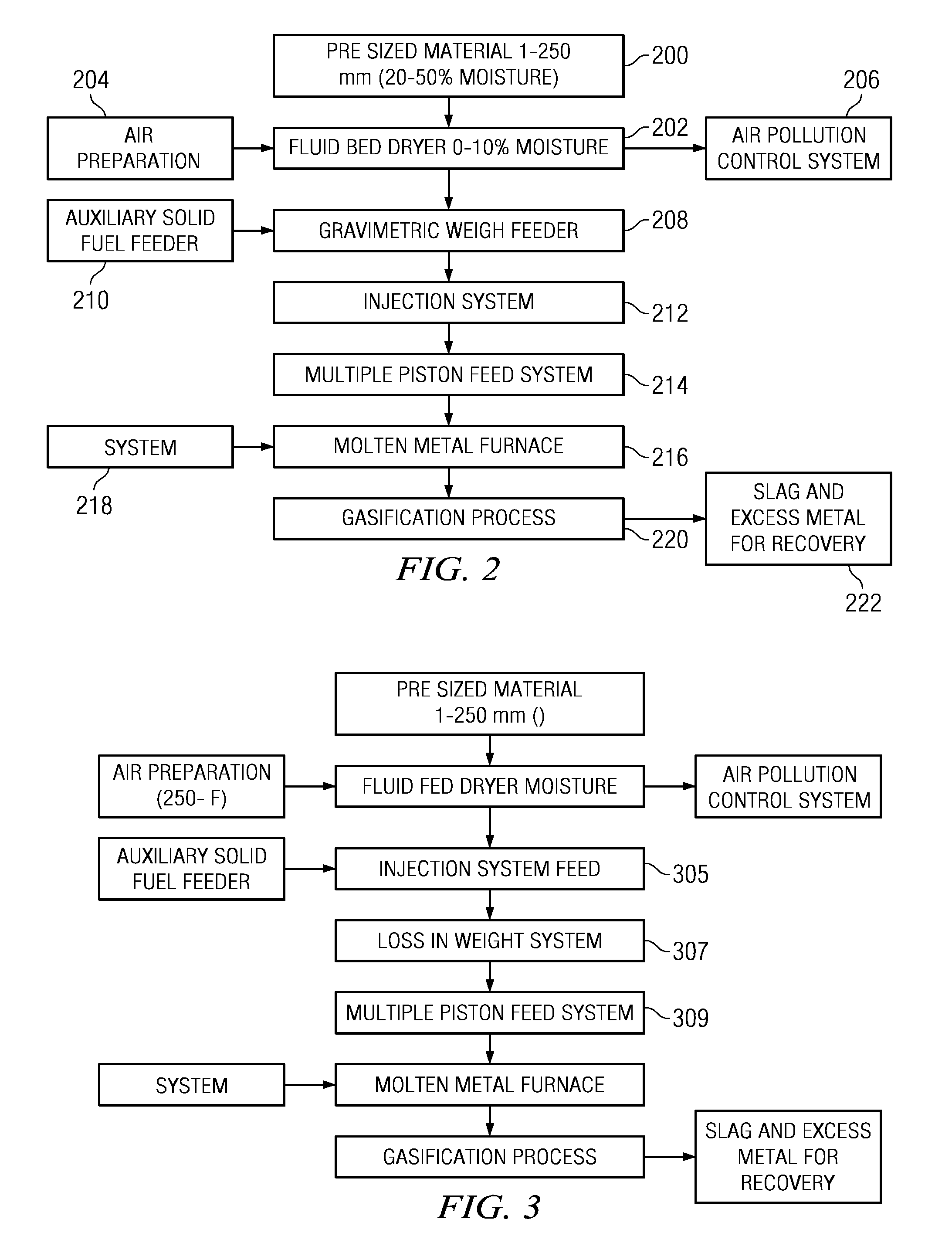Construction & demolition debris (C&D) materials processing
a technology for demolition debris and materials processing, applied in the field of waste handling, can solve problems such as undesirable by-products, and achieve the effect of constant energy outpu
- Summary
- Abstract
- Description
- Claims
- Application Information
AI Technical Summary
Benefits of technology
Problems solved by technology
Method used
Image
Examples
Embodiment Construction
[0016]According to this disclosure, a complete or end-to-end facility for processing construction and demolition waste (C&D) typically comprises several stages: C&D handling and sorting, C&D pre-processing, C&D debris post-processing, gasification, and, optionally, post-gasification / energy generation. It is not required that each of these stages is physically co-located in the same building, but it is desirable that the stages be carried out in close physical proximity where possible. Thus, in one embodiment, all of the stages are carried out in a single building, facility or enclosure; in an alternative embodiment, the handling and sorting, and pre-processing stages are performed in a first enclosure, while the post-processing and gasification stages are carried out in a second, nearby building, facility or enclosure. Preferably, the C&D processing takes place in a continuous or partially-continuous manner as bulk debris is received at the processing facility.
[0017]FIG. 1 is a proc...
PUM
 Login to View More
Login to View More Abstract
Description
Claims
Application Information
 Login to View More
Login to View More - R&D
- Intellectual Property
- Life Sciences
- Materials
- Tech Scout
- Unparalleled Data Quality
- Higher Quality Content
- 60% Fewer Hallucinations
Browse by: Latest US Patents, China's latest patents, Technical Efficacy Thesaurus, Application Domain, Technology Topic, Popular Technical Reports.
© 2025 PatSnap. All rights reserved.Legal|Privacy policy|Modern Slavery Act Transparency Statement|Sitemap|About US| Contact US: help@patsnap.com



